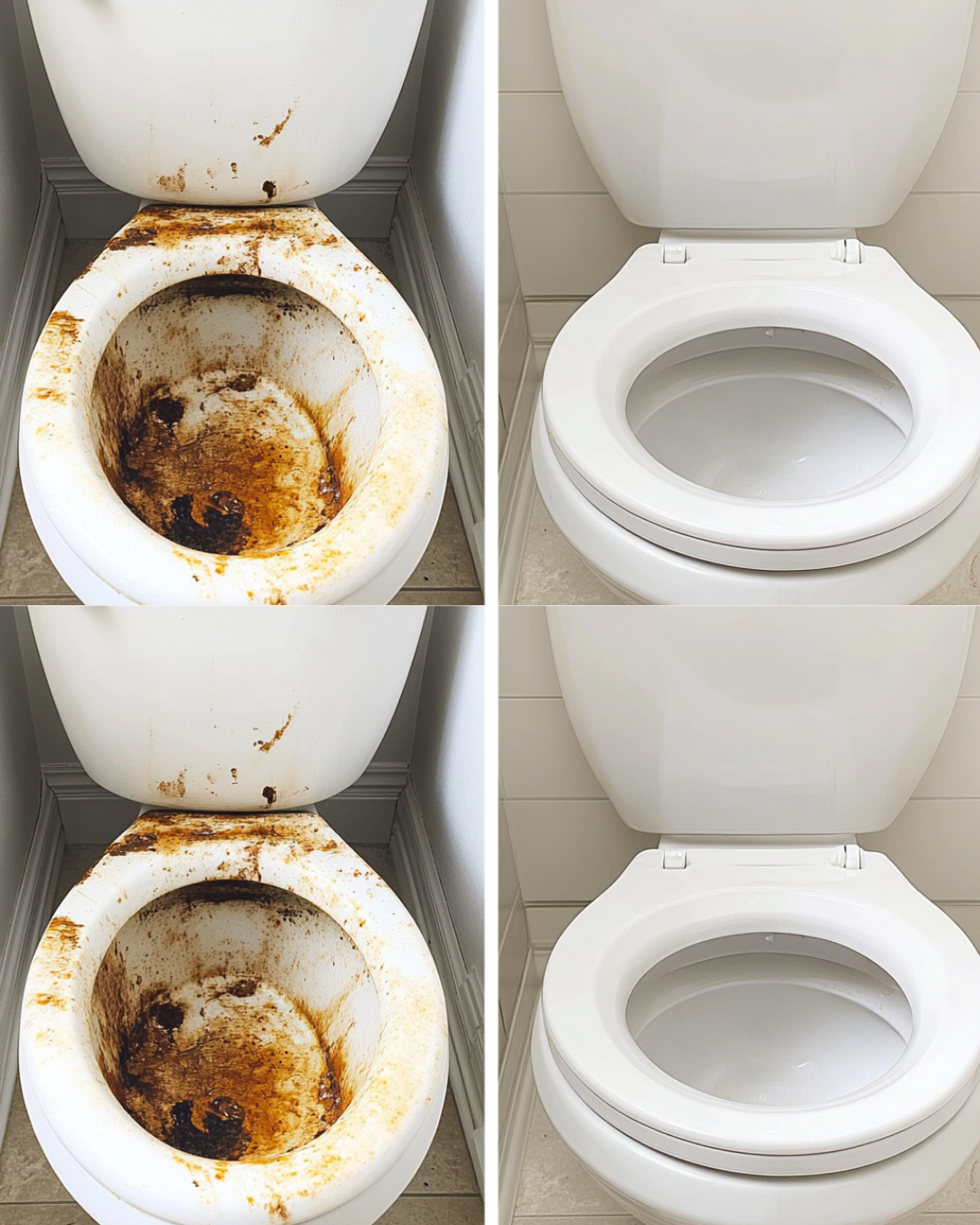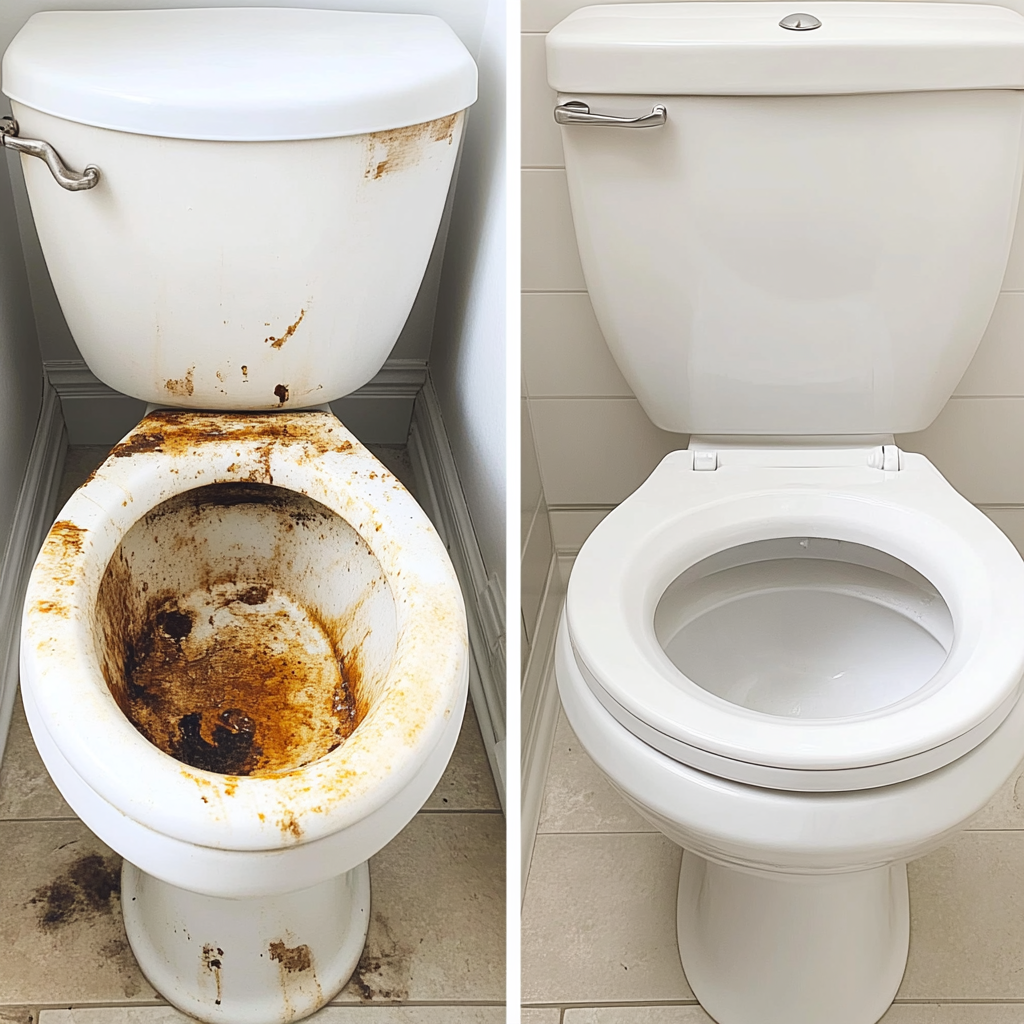With This Substance, Stubborn Limescale from Toilets Is Removed
Limescale buildup in toilets is a common problem, but with the right substance, you can easily remove it and restore your toilet’s cleanliness and shine.
The Shocking Truth About With This Substance, Stubborn Limescale from Toilets Is Removed
Limescale buildup in toilets is something that many homeowners deal with. Not only does it look unsightly, but it can also cause plumbing issues over time. If you have noticed stubborn limescale in your toilet, you’re not alone. Fortunately, with the right tools and methods, you can effectively remove it. One of the best substances for tackling this problem is vinegar. Yes, this simple kitchen staple can work wonders when it comes to removing stubborn limescale. In this article, we’ll dive deep into how vinegar works to remove limescale, why it’s such a game-changer for your toilet, and how to use it effectively.
Limescale forms when minerals like calcium and magnesium accumulate over time, particularly in areas with hard water. This buildup can be difficult to remove using conventional cleaning methods. However, with vinegar, you can break down these deposits and restore your toilet to its original cleanliness. We’ll also discuss why vinegar is preferred over other chemical cleaning agents and share some expert tips on how to achieve the best results.
How With This Substance, Stubborn Limescale from Toilets Is Removed Works: The Science Behind the Magic
To understand why vinegar is so effective in removing limescale, it’s important to know the science behind it. Vinegar is an acidic substance, specifically acetic acid. When poured onto limescale, the acidity of vinegar reacts with the calcium carbonate (the main component of limescale). This reaction breaks down the hard, chalky deposits into a softer, more manageable form that can easily be scrubbed away.
Additionally, vinegar’s acidic properties make it effective in dissolving other mineral deposits that may form in your toilet, like rust or lime buildup. It not only helps clean the toilet but also helps prevent further build-up, making it a powerful tool in maintaining toilet cleanliness.
What makes vinegar especially beneficial is that it’s natural and non-toxic, unlike many commercial toilet cleaning products that may contain harsh chemicals. These harsh chemicals can be dangerous to the environment, your plumbing, and your health. Vinegar, on the other hand, offers a safer and more sustainable solution for toilet maintenance.
5 Easy Ways to Use With This Substance, Stubborn Limescale from Toilets Is Removed for Maximum Results
Now that you understand the science behind vinegar’s effectiveness, let’s dive into how you can use this substance to remove limescale from your toilet. Here are five simple yet effective methods:
-
Vinegar and Baking Soda Scrub: This method is perfect for toilets with significant limescale buildup. Begin by pouring a cup of vinegar into the toilet bowl and letting it sit for a few minutes. Then, add a half-cup of baking soda. The fizzing reaction will help break down the limescale. Scrub with a toilet brush and flush to rinse.
-
Vinegar Soak: If the limescale is particularly stubborn, try this overnight vinegar soak. Pour a generous amount of vinegar into the toilet bowl, ensuring that the affected areas are fully submerged. Leave it overnight, and in the morning, scrub away the softened limescale with a brush. This method is especially effective for hard-to-reach areas under the rim.
-
Vinegar and Water Solution: For regular maintenance, mix equal parts vinegar and water in a spray bottle. Spray the solution directly onto the limescale, let it sit for 15-20 minutes, and then scrub. This method is great for light buildup and ongoing maintenance.
-
Vinegar Toilet Tank Treatment: The tank of the toilet can also accumulate limescale, especially in areas with hard water. Add a few cups of vinegar into the tank and let it sit for a few hours before flushing. This will help dissolve the limescale inside the tank and prevent it from affecting the toilet bowl.
-
Vinegar and Lemon Juice: For an extra boost, combine vinegar with lemon juice. Both have acidic properties that work well together to break down mineral deposits. Apply the mixture to the toilet bowl and scrub as usual.

Expert Tips to Supercharge Your With This Substance, Stubborn Limescale from Toilets Is Removed Experience
To get the best results, here are some expert tips for using vinegar to remove limescale:
-
Use Hot Vinegar: Warm vinegar is more effective at breaking down limescale. Heat the vinegar in the microwave or on the stove before applying it to your toilet. Be sure it’s warm, but not boiling, as boiling vinegar can cause damage to your toilet.
-
Let the Vinegar Sit: The longer the vinegar sits on the limescale, the more effective it will be at dissolving the buildup. Let it sit for at least 30 minutes, but if possible, leave it overnight for the most stubborn stains.
-
Scrub Frequently: Regular scrubbing is key to preventing limescale buildup. Make it a habit to scrub your toilet with vinegar and a toilet brush once a week to keep it spotless.
-
Use a Pumice Stone: If vinegar alone doesn’t completely remove the buildup, try using a pumice stone. Gently scrub the surface with the pumice stone after the vinegar treatment for an extra level of cleaning power.
-
Wear Gloves: Vinegar is gentle, but it’s always a good idea to wear gloves while cleaning to protect your skin.
The Biggest Mistakes People Make with With This Substance, Stubborn Limescale from Toilets Is Removed
While vinegar is a powerful tool for removing limescale, there are a few common mistakes that people make when using it. Let’s take a look at some of the biggest errors:
-
Not Letting It Sit Long Enough: Some people rinse away the vinegar too quickly. For best results, allow the vinegar to sit for at least 30 minutes before scrubbing.
-
Using Too Little Vinegar: Vinegar is most effective when applied generously. Be sure to pour enough to cover the affected area and ensure it can break down the limescale effectively.
-
Using Abrasive Tools: While a toilet brush is ideal for scrubbing, some people use harsh abrasive sponges or scrubbers that can damage the toilet’s surface. Always use non-abrasive tools to avoid scratching.
-
Not Cleaning Regularly: Preventing limescale is easier than removing it. Clean your toilet regularly to stop limescale from building up in the first place.
Final Thoughts: Why You Should Try With This Substance, Stubborn Limescale from Toilets Is Removed Today
In conclusion, vinegar is a simple, effective, and natural solution to removing stubborn limescale from toilets. With its acidic properties, it breaks down mineral buildup without the need for harsh chemicals. Whether you have a little buildup or significant stains, vinegar can work wonders in restoring the cleanliness of your toilet.
By following the methods and expert tips outlined in this article, you can maintain a spotless toilet and prevent future buildup. So, next time you’re faced with stubborn limescale, reach for a bottle of vinegar and experience the magic for yourself.
Frequently Asked Questions (FAQs)
What will remove limescale from a toilet?
Vinegar is an effective natural solution for removing limescale from toilets. It breaks down mineral deposits and helps restore the toilet’s cleanliness.
How to remove stubborn limescale?
To remove stubborn limescale, pour vinegar into the toilet bowl, let it sit for at least 30 minutes, and then scrub with a toilet brush. For tougher stains, leave it overnight.
Why does limescale build up in the toilet?
Limescale builds up in the toilet due to hard water, which contains high levels of calcium and magnesium. Over time, these minerals accumulate and form deposits on surfaces.
What type of chemical is used to remove limescale?
Commercial limescale removers often contain strong acids like hydrochloric acid. However, vinegar, a more natural and safer alternative, can also effectively dissolve limescale.
For more interesting tips, you can see here www.sotastyrecipe.com/tips
And for recipe lovers, you can check my friend’s blog here www.infloin.com

